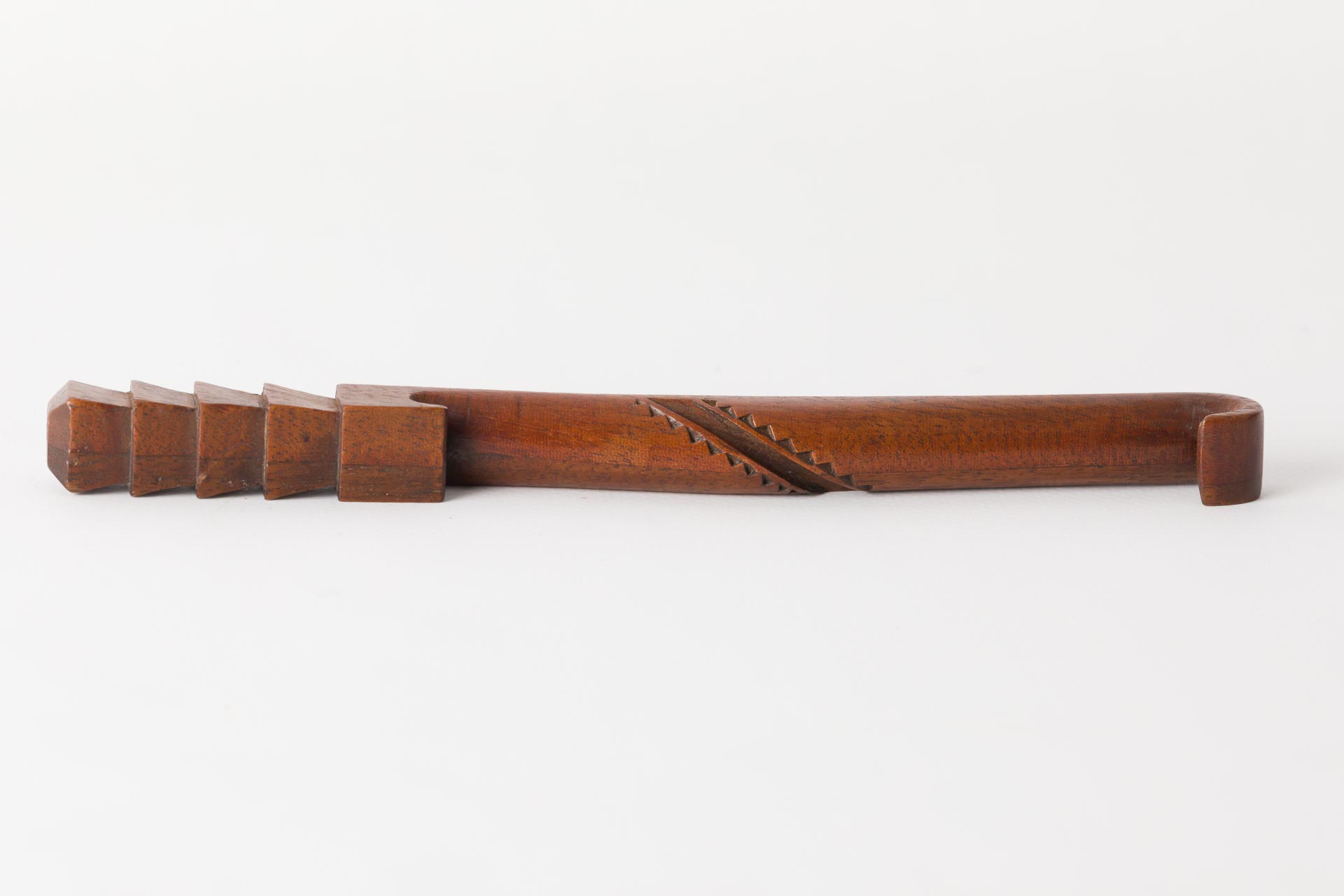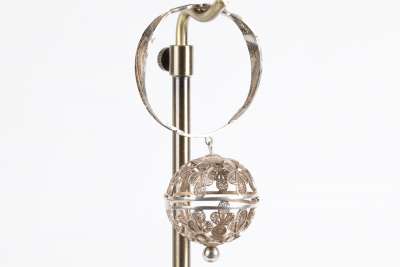This antique wooden knitting needle sheath, crafted circa 1850-1880, is a noteworthy artefact of needlework history. Originating from the United Kingdom, this sheath features an unusual step to the hook, a unique characteristic that distinguishes it among similar objects of its kind. The name "MAUD" is inscribed on the reverse, providing a personal touch and hinting at its previous owner. The piece also includes a diagonal slot designed for apron strings, highlighting its functional purpose in the knitting process. This sheath offers a glimpse into 19th-century craftsmanship and the practical tools used by knitters of the period.
Condition Report
The wooden knitting needle sheath is in good condition, exhibiting a patina that is consistent with its age and use. The surface shows signs of wear, typical for an item from the mid-19th century, indicating it was a well-used tool in its time. The inscribed name "MAUD" remains legible, adding to the piece's historical value. The diagonal slot, intended for securing apron strings, is intact and shows wear that aligns with frequent use. The overall structural integrity of the sheath is maintained, with no significant damage or repairs noted. This condition is testament to the durability and quality of the craftsmanship of the era.
Dimensions
Weight: 15gm, Length: 19.5cm, Width: 1.5cm.
A Practical Tool for Knitters
The original purpose of this knitting needle sheath was to facilitate the knitting process by holding a knitting needle securely in place. The diagonal slot was specifically designed to thread apron strings through, allowing the sheath to be worn at the waist. This setup enabled the knitter to keep one needle stable, freeing up the hands to manipulate the yarn and other needles. Such tools were commonly used by knitters to maintain tension and speed up the knitting process, making them indispensable in the craft's practice during the 19th century.
Victorian Era Craftsmanship
This knitting needle sheath is a fine representation of Victorian era craftsmanship, characterised by its utilitarian design and personal embellishments, such as the engraved name. During this period, needlework tools were often handmade, reflecting both the artisan's skill and the owner's personal style. The Victorian era was a time when needlework was a prevalent domestic activity, and tools like this sheath were essential for everyday knitting tasks. The design is both functional and decorative, embodying the practical artistry that defined Victorian needlework implements.
Craftsmanship in Wood
The sheath was likely crafted from a single piece of wood, shaped and smoothed to fit comfortably in the hand. The process would have involved carving the wood to create the hook and slot, followed by sanding to remove any rough edges. The engraving of "MAUD" suggests the use of small chisels or knives for fine detailing. The patina indicates that the wood was probably left in its natural state, allowing it to develop a rich, warm appearance over time. This handmade approach highlights the skill and attention to detail required to produce such a tool.
Attributed to an Unknown Artisan
The maker of this knitting needle sheath remains unidentified, a common occurrence with domestic tools from this period. While the artisan's identity is unknown, the quality of the craftsmanship suggests it was made by someone skilled in woodworking. The personalised inscription "MAUD" may provide a clue to its original owner rather than its maker, indicating that such items were custom-made or personalised post-production. This sheath stands as a testament to the anonymous artisans who created everyday objects with care and precision.
Collected by Enthusiasts of Historical Needlework Tools
Antiques like this knitting needle sheath are highly valued by collectors of needlework tools due to their historical significance and craftsmanship. Collectors appreciate the insight these objects provide into the daily lives and practices of 19th-century knitters. Such items are often sought after for their unique designs, personal inscriptions, and the stories they carry from the past. This sheath, with its distinctive features and well-preserved condition, is a captivating addition to any collection focused on the history of needlework and the evolution of knitting technology.













